President Trump’s Wednesday tariff announcement was larger in scope than many businesses and policy analysts were predicting, with the imposition of a 10 percent general tariff on imports to the U.S. and additional targeted tariffs on dozens of other countries.
The taxes on U.S. importers of foreign products are a major unilateral escalation of Trump’s trade war, though the White House has been describing them as “reciprocal” due to long-standing trade deficits run by the U.S. and higher tariffs in some countries.
The tariffs being imposed by Trump, which have a wide range of values, appear to be calculated directly from U.S. deficit levels with each country.
Here’s a look at what the practical effects of the tariffs could be for American workers and consumers, and some key questions.
First of all — will they last?
During his first 100 days in office, Trump has teased, issued and then reversed multiple tariff orders, often within just a few days, so there’s a strong possibility the large-scale Wednesday tariffs could be modified in short order, potentially as part of negotiations with different countries.
Administration officials say they’re already in the process of those talks.
“We’re negotiating now. We move into some significant negotiations,” Agriculture Secretary Brooke Rollins said Thursday on Fox Business Network.
Rollins gave a timeline of weeks or months to “renegotiate” the tariffs.
“The next few weeks, the next few months, we’ll see as we continue to renegotiate the tariffs, and as we look to see what the impact will be,” she said.
The order could be canceled outright, as happened when Trump closed the so-called de minimis loophole, which put new tariffs on Chinese imports worth $800 or less and required them to be inspected by customs officers.
That policy change resulted in a million packages piling up at John F. Kennedy International Airport in New York and was canceled in a matter of days.
The order could also be reined in, as happened when Trump announced a 25 percent tariff on Canadian and Mexican imports before exempting goods that were already covered under a preexisting trade deal, the U.S.-Mexico-Canada Agreement (USMCA).
That said, the White House at times has also suggested the tariffs could be more permanent and are not meant to trigger a negotiation.
“This is not a negotiation, it’s a national emergency,” one White House official said on a call Wednesday explaining the tariffs.
Retail prices could go up
It’s likely that prices will rise if the tariffs remain in place.
Tariffs increase the costs of bringing goods to the market, and some portion of that cost is likely to be passed on to consumers.
This would also lead to inflation.
“We estimate that today’s announced measures could boost … prices by 1 to 1.5 percent this year, and we believe the inflationary effects would mostly be realized in the middle quarters of the year,” economist Michael Feroli wrote Wednesday for J.P. Morgan.
It’s of course possible that companies could also just eat the cost of the tariffs, but that would cut into company bottom lines.
It’s also possible that companies will alter their supply chains toward domestic production and avoid the tariff, though international production has been the norm in many sectors for decades, and companies are likely loath to do this.
Companies could also raise prices and just blame it on the tariffs, which corporate critics would call a form of price gouging.
“You have seen on earnings calls big companies announcing things like, ‘In anticipation of tariffs, we’re going to have to raise prices.’ That is price gouging. Price gouging is raising prices above what the actual increased cost is,” Lori Wallach, a longtime critic of free trade policies who argues they have been devastating to U.S. workers, among other groups, said on a Thursday call with reporters. Wallach is the director of trade advocacy group Rethink Trade.
The effect on employment — both short term and long term
Amid uncertainties, some companies are already pausing their hiring.
IPC, an electronics trade association, said this week that 18 percent of companies it surveyed in March have implemented a hiring freeze in response to tariffs, with another 36 percent considering it.
The association said it’s seeing “growing caution around workforce expansion,” which Wednesday’s announcement will likely exacerbate.
The National Association of Wholesaler-Distributors trade group made a similar observation in March in response to a previous tariff announcement by the Trump administration.
“Because duties must be paid immediately upon import, they divert valuable capital away from critical investments in hiring, wages, training, and expansion,” the group said.
In the worst-case scenario, the tariffs could spark a recession. Trump administration officials have indicated they’re prepared for the tariffs to result in an economic downturn, with Commerce Secretary Howard Lutnick saying earlier this year it would be “worth it.”
Trump wants the tariffs to spur a revival of the domestic industry. Trump has said repeatedly he wants to bring manufacturing jobs, which have largely been outsourced over the past few decades to countries with lower labor costs, back to America.
“Jobs and factories will come roaring back into our country,” Trump said Wednesday.
Tariffs by themselves don’t guarantee that outcome but could be a component of a broader industrial strategy if policies favorable to workers are advanced as well, such as those supporting higher wages and limiting the adoption of job-replacing automation.
There is little evidence of a broader worker-protection agenda being advanced by the Trump administration so far, however.
“The BMW plant in San Luis Potosi [Mexico] is probably more automated than the BMW plant in Germany,” United Auto Workers union adviser Jason Wade said on a call with reporters Thursday. “The difference is that the workers in San Luis Potosi make $1.50 while the workers in Germany make $30 to $40 an hour.”
“The product they sell and the value that those workers in Mexico produce for the company is the same as a worker in Germany or a worker in the U.S.,” he said.
The influential Teamsters labor union told The Hill in a statement it was supportive of the tariffs.
“The Teamsters support policies that will lead to the creation of good union jobs and bring back manufacturing to the United States. More jobs and more manufacturing in America are all good things,” a Teamsters spokesperson said. “This is about an economy for workers, one that is in the interest of working people, and tariffs will help accomplish that.”
What’s the risk of a general economic slowdown?
Prior to the Wednesday tariff order, the economy was already showing some signs of stress related both to the uncertainties surrounding Trump’s trade agenda and broader macroeconomic trends, including upticks in prices over the fourth quarter of last year.
Both consumer and business sentiment has been ailing in recent months, with shoppers expecting higher prices in the year ahead and proprietors unsure about where to make investments.
Flagging sentiment has been registered in surveys from the University of Michigan, the National Federation of Independent Business, the ISM purchasing managers index, and the New York Federal Reserve.
While sentiment isn’t a solid predictor of economic contractions, stock market crashes can be, and Wednesday’s tariff announcement has already resulted in a substantial downward movement in company valuations.
The Dow Jones Industrial Average lost more than 3 percent of its value in Thursday morning trading and the tech-heavy Nasdaq composite lost nearly 5 percent.
According to asset manager Morningstar, “recession risk over the next year has climbed to at least one third.”
“Recession risk has vaulted up,” Morningstar economist Preston Caldwell wrote Thursday. “If the tariff hikes are maintained, they will permanently reduce U.S. real gross domestic product, and hence real living standards for the average American.”
The cultural and political impact for Americans
U.S. allies like Europe are lumped together in the new tariffs with economic adversaries like China. In addition to ramping up rivalries, the U.S. could lose some friends or see some close relationships cool off.
European Commission President Ursula von der Leyen said Trump’s tariffs represent a “major blow to the world economy.”
Taiwan, a key U.S. ally in the Pacific amid rising territorial tensions with China that is set to face a 32 percent tariff for its exports to the U.S., said the tariffs were “highly unreasonable.”
Japan, another top U.S. ally, called the 24 percent duty that its companies will face “extremely regrettable.”
In addition to world leaders, international commercial groups are fuming at the U.S.
“This is not America first. This is America alone,” Hildegard Müller, president of the German auto industry trade group VDA, said Wednesday.
The Irish Whiskey Association said the order could undo years of growth.
“Should an appropriate resolution not be found, this tariff may have a detrimental effect on the position of the category in the U.S. market, undoing decades of success and growth,” the group said, as reported by Irish broadcaster RTE.
Civil society and poverty reduction organization Oxfam said that “ordinary people” will be hit hardest by the tariffs, which will increase the cost of living.
“Ordinary people are already weathering skyrocketing costs-of-living, and now we’re seeing damaging tariffs and proposed cuts to the safety net,” Oxfam America President Abby Maxman said. “Ultimately, Trump’s use of tariffs is part of a harmful economic blueprint that will inflame inequality.”
Economists for the United Nations have been calling out the trend of increasing economic protectionism for some time.
“The disruptions caused by … tariffs could lead to shifts in production and sourcing patterns, as companies and countries adjust to new trade barriers and seek to mitigate the costs of these tariffs,” economists for the U.N. Conference on Trade and Development wrote in a March global trade report.



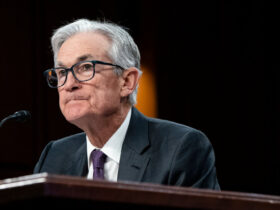

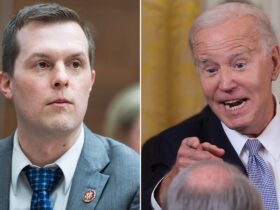



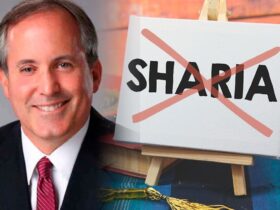
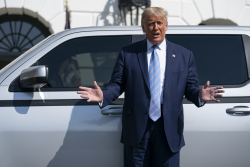

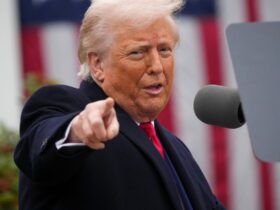
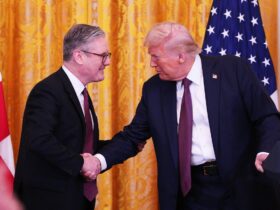
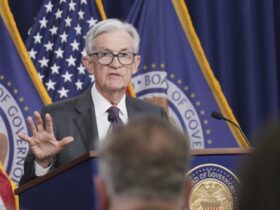

Leave a Reply